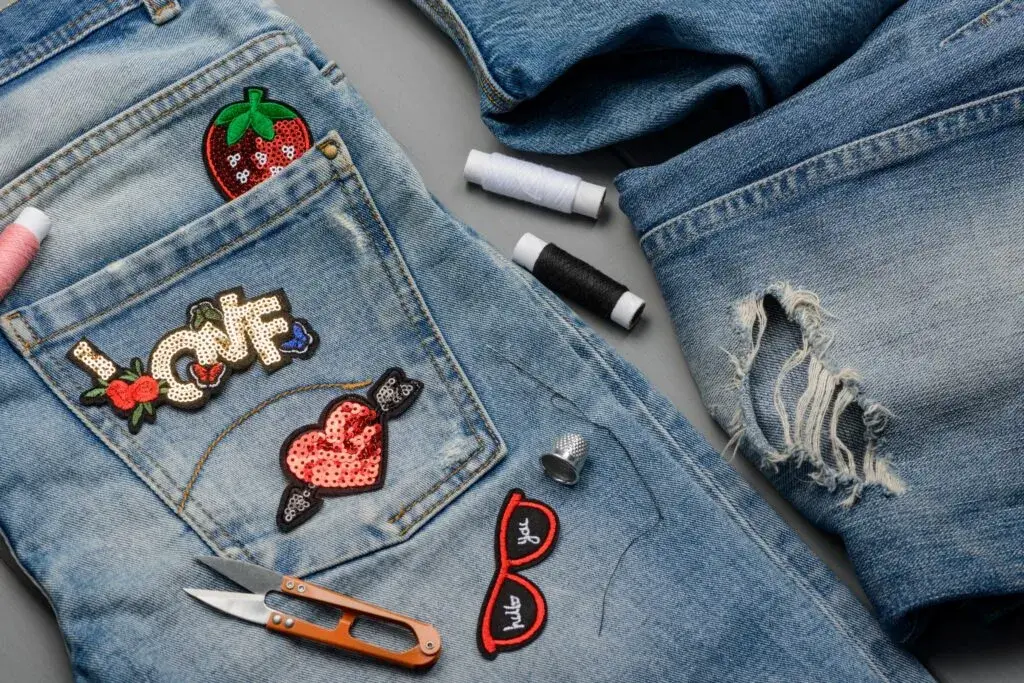Sublimation Printing vs. Screen Printing
Are you deciding between sublimation and screen printing?
Whether you need custom-printed designs for your print-on-demand store or corporate branding, the right branding will make or break the aesthetics of the final product.
In this post, we share when to use sublimation and screen printing. Plus, you’ll learn their differences to pick the best printing method for your items.
What Is Sublimation Printing?
Sublimation print is a digital printing method for transferring dye onto materials with heat and pressure.
By using specialized inks and machines, designs can be printed on a wide range of items, such as mugs, shirts, and hats.
Kickstart your designs with AI
Leverage the power of AI to streamline your design process,
turning your ideas into polished, production-ready products with ease.
How Does Sublimation Printing Work?
Sublimation turns solid ink into a gas without going through the liquid stage.
In the past, people had to press solid images from transfer paper onto the product and heat it until it stuck. But with sublimation, the process is longer lasting.
To get started, you’ll need a few essential items. The most important tool is a compatible printer that can work with sublimation ink cartridges.
You must also have a heat press to transfer the designs onto the fabric or material. If you plan to print on items like ceramic mugs, you might want a mug clamp and press specifically designed for that purpose.
Don’t forget transfer paper (which can be sublimation-specific or regular copy paper), and you might want to consider getting raster image processing (RIP) software for adjusting and enhancing colors in your designs.
That said, here’s how this method works. First, load the sublimation ink into a specialized digital printer and feed in your design and the item you want to print on. The ink gets heated and changes directly into a gas. This gaseous ink presses onto the material and bonds with the fibers inside it.
When the image touches the item’s surface, it turns back into a solid, and the ink sticks to the fabric or ceramic without any seams or edges, creating a smooth and lasting print.
Advantages of Sublimation Printing
- Detailed and vibrant results: Sublimation excels in vibrant and intricate prints. Thanks to high temperatures, the lines are sharper, and the colors don’t fade.
- Print durability: Unlike some printing methods where ink sits on the surface, sublimation ink absorbs into the material.
- Quick turnaround time: Since it’s a digital process that doesn’t require physical screens or plates, these printers can quickly produce high-quality prints with less manual labor than other methods, such as DTG and screen printing.
- Variety of products: Sublimation is incredibly versatile, allowing for creativity in choosing materials. You can create custom clothing, mugs, bags, mouse pads, and more.
- Eco-friendliness: It employs dry inks rather than water-based inks, reducing environmental impact. In addition, it minimizes ink wastage by applying ink only where needed.
Disadvantages of Sublimation Printing
- Material limitations: Unfortunately, this technique mostly only works on types of fabric with a high concentration of polyester. The less polyester the fabric has, the more faded it appears in prints.
- Base color limitations: It’s only available in white or light-blank products. Sublimation printing doesn’t offer white ink, and the ink can’t lighten its base color. If you try sublimating on a black fabric, the dye will transfer, but you won’t see the results.
- White creasing: If you try sublimating onto a ready-made garment, it may not print properly and cause white streaks.
What Is Screen Printing?
Screen printing uses a mesh screen to transfer ink onto a substrate like fabric, plastic, or paper. A stencil is created on the screen, with areas that are resistant to ink blocked out, leaving only the desired design exposed.
Ink is then applied to the screen and pushed through the unblocked areas using a squeegee, resulting in a printed design on the substrate.
This method is commonly used to print on clothing, promotional items, and signage and can produce high-quality, long-lasting prints.
How Does Screen Printing Work?
Screen printing works by transferring ink from the mesh screen onto the substrate.
You start by digitally or hand-creating the design, which prints onto a transparent film. Each color in the design requires a separate screen, so multi-color designs undergo a color separation process.
A mesh screen is stretched tightly over a frame, creating a screen. The screen is then coated with a light-sensitive liquid coating called emulsion, forming a thin layer on the mesh.
The screen is exposed to UV light, causing the emulsion to harden in areas not covered by the film’s design.
Multiple screens are mounted on a screen printing press. The substrate, such as a t-shirt, is placed on the printing table beneath the screens.
Ink is placed at the top of the screen, corresponding to the first color. A squeegee is then used to pull or push the ink across the screen, forcing it through the open mesh and onto the substrate. The ink adheres only to the areas where the stencil can pass through.
The process is repeated for each color in the design. Each color requires its separate pass through the press.
Then, the substrate typically moves through a drying unit, which applies heat to the ink. This heat sets the ink, making it permanent and ensuring it won’t smudge or wash off.
Advantages of Screen Printing
- Durable: Designs printed using screen printing can withstand more friction than other printing methods, making them more durable and long-lasting.
- Cost-effective for large quantities: Screen printing is best reserved for large orders since it requires the fabrication of screens for every color used in an artwork. The more garments placed in an order, the cheaper the cost per unit will be.
- Adaptable: It can be used on various substrates, including fabric, paper, and plastic.
- High quality: This method can produce high-quality, vibrant prints with a unique texture and feel that can’t be replicated with other printing methods.
Disadvantages of Screen Printing
- Labor-intensive: It’s more labor-intensive than other printing methods, requiring more setup time and manual labor.
- Limited color options: It’s best for simple designs with limited colors. Each color requires a separate screen, which can make the process more time-consuming and expensive.
- Not suitable for small runs: Screen printing is not cost-effective for small runs since the setup costs can be high.
- Not ideal for complex designs: This technique isn’t great for complex designs with fine details or gradients.
Sublimation vs. Screen Printing: Key Differences
If you’re still trying to compare the two, we’ve broken down the differences between both printing methods.
Print Quality
Screen printing outputs exceptional print quality with sharp and vibrant colors. This method is best used for designs featuring one or a few colors in the logos and texts. However, screen printing doesn’t support more refined designs with many colors.
Like screen printing, sublimation produces equally sharp and vivid colors, But it allows for more detailed and intricate designs with many colors, including photos.
Fabrics and Materials
Screen printing performs exceptionally well on cotton fabrics, bonding better with the fabric fibers.
On the other hand, sublimation printing is best used on materials with a high polyester content, including polymer-coated fabrics, polyester blends, and light-colored polyesters.
The higher the polyester percentage in the material, the better the results. Sublimation is also compatible with materials like neoprene, spandex, and nylon. Also, this technique is ideal for printing designs on enamel or ceramic mugs and cork-backed coasters.
That said, sublimation isn’t designed to work well with natural fibers like silk and cotton since the sublimation ink doesn’t stick well to those fibers.
Durability
Screen printing leaves the ink on the fabric’s surface, resulting in thicker prints as more colors are added. While the plastisol ink used in screen printing offers durability over time, it can crack, peel, and fade after multiple washes, making it less durable in the long run.
On the other hand, sublimation printing tends to last longer. This durability stems from the ink’s integration into the fabric fibers through the heat-based process, making it highly resistant to washing out. Furthermore, sublimation prints remain vibrant without fading or peeling.
Print Complexity
Screen printing best suits creating bold designs with one or a few colors. Achieving intricate gradients in these designs can be difficult, as it demands a high level of expertise, specific chemicals, and plenty of patience to craft a detailed screen print stencil.
In contrast, sublimation printing offers the freedom to easily print refined patterns, complex gradients, captivating artwork, or digital photos. You can create your artwork using graphic design software like Adobe Photoshop before transferring the design to the transfer sheet.
Which Type of Printing Is Right for You?
Now that you know everything about each printing method, you may wonder which method is right for you.
Both methods can be great for print-on-demand companies, corporate brands, or product promotions. That said, it depends on the type of product and fabric you plan on using.
When selecting a method, consider how you want your designs to appear. Sublimation can print detailed, multicolored artwork, patterns, and photos covering an entire garment.
Also, consider the type of fabrics you want to sell. Sublimation works best on polyester and polyester-blend fabrics. It’s also good for hard surface items like mugs and phone cases.
On the other hand, screen printing is best for outputting simple designs on cotton or other fabrics. It’s also great for larger quantities of items, as it’s more cost-effective for larger runs. However, unlike sublimation, it’s best to stick with simple designs with one or a few solid colors.
Screen printing can produce high-quality, long-lasting prints, but it is more labor-intensive and requires more setup time than sublimation printing.
Frequently Asked Questions
Is Screen Printing More Expensive Than Sublimation?
Screen printing is typically more expensive than sublimation printing due to the amount of labor involved and materials used. There are many initial setup costs with screen printing because you’ll need different sets of tools such as screens, squeegees, inks, frames, and even design software.
What Is Better, Sublimation or Screen Print?
Sublimation printing is best for printing full-color designs on polyester garments, while screen printing is better for simple designs on cotton or other fabrics. Also, sublimation is best for hard surfaces, while screen printing is optimal for soft surfaces.
Final Thoughts
Ultimately, the choice is yours. Each printing method has its advantages and disadvantages.
It’s up to you to define the type of product, fabrics, colorways, and level of detail needed.
Fortunately, THE/STUDIO has everything you need to get the quality of design you need to sell to your audience. With a wide range of custom products like patches, beanies, hats, socks, stickers, and more, you can turn your imagination into reality.
Follow our simple custom design process, and you’ll have your products ready in no time. Get started with THE/STUDIO today!




